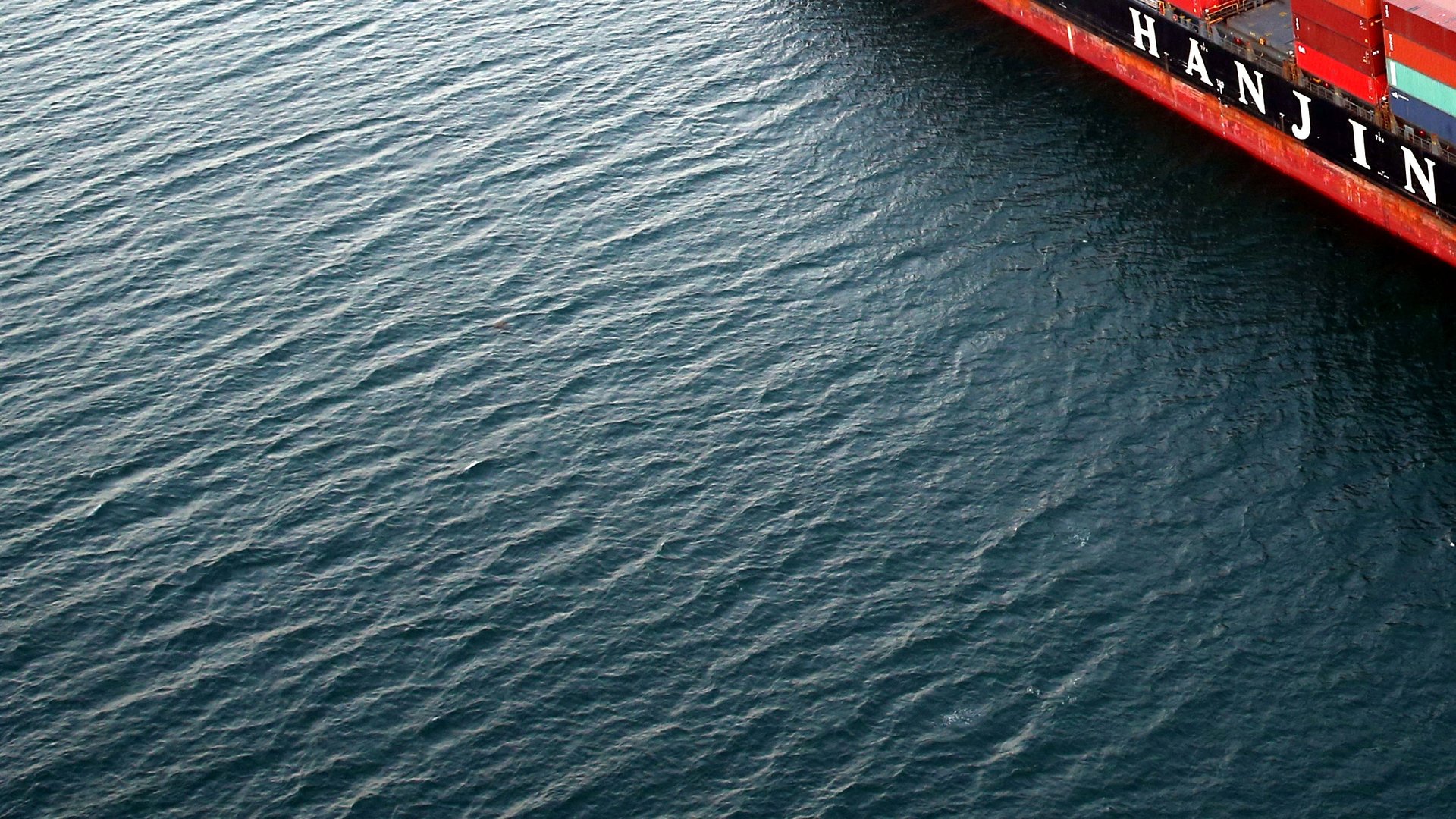How shipping hubris and the Korean government broke Hanjin shipping
All is not well in the intricate global system that brings the world its goods after Hanjin shipping declared bankruptcy this week.


All is not well in the intricate global system that brings the world its goods after Hanjin shipping declared bankruptcy this week.
The South Korean firm operated 90 ships, making it the world’s seventh-largest fleet, accounting for less than 4% of global shipping. But its demise—the biggest-ever shipping bankruptcy—has disrupted trade to the point where US retailers are starting to fret about stocking goods ahead of the busy holiday season and shipping competitors are hiking prices by as much as 50%.
The company’s demise is largely due to overcapacity; wild growth in the number and capacity of container ships has outstripped the amount of goods to be carried as global trade has slowed. The industry as a whole will lose as much as $10 billion this year.
Falling prices have left comparative minnows, like Hanjin,without the cash flow to continue operating—the company owed almost nine times its market value in debt. Bigger companies have been locked in an arms race to build the largest-possible ships, even as they seek mergers and competitive alliances that stay just one step ahead of international anti-trust cops.
There is a twist in Hanjin’s story, however. It tumbled into bankruptcy after one primary creditor, the Korean Development Bank, refused to restructure its loans. KDB is also the major financier behind Hyundai Merchant Marine, another South Korean shipper and the main rival to Hanjin. In the eyes of industry observers, like Flexport CEO Ryan Peterson, KDB’s refusal to negotiate with Hanjin was a choice to effectively consolidate the country’s shipping into one firm:
After some messiness with customers not getting cargo delivered on time over the coming weeks, the Korean government gets a rather acceptable outcome: Instead of supporting two ailing carriers with constant bailouts as they compete all the profits out of Korean trade lanes, they get a single national champion that they can support as it competes on a global basis with best of breed carriers around the world.
That will prove cold comfort to those dealing with the fallout from the bankruptcy. Many ports refused to allow Hanjin ships to offload their cargo or obtain supplies. Port officials feared the ships would be unable to pay for tugs, offloading, food or water, or that creditors would attempt to seize ships and cargo. Hanjin has been scrambling to raise money to get its ships offloaded and keep its sailors from starving at sea.
As well as sailors, cargo has been stranded offshore, delaying deliveries and creating a mess with for the various firms who handle shipping for major retailers. Some buyers awaiting perishable goods have had to pony up special fees to the ports so they can obtain them before they rot at sea.
Then there are shippers who were counting on Hanjin to carry goods to the US over the coming weeks, ahead of the busy holiday shopping season beginning in November. Opportunistic carriers are raising rates, according to US businesses like UPS, and retailers may see higher transit costs eat into margins at a profitable time.
The price hikes are expected to fade, since analysts expect Hanjin’s ships to be picked up at auction and put back to work plying the trade routes. That’s a bit of a mixed blessing for the industry, even if customers will be happy to see low prices return, because the problem of overcapacity isn’t about to go away.
“There will very likely be more Hanjins,” warns shipping analyst Olaf Merk.